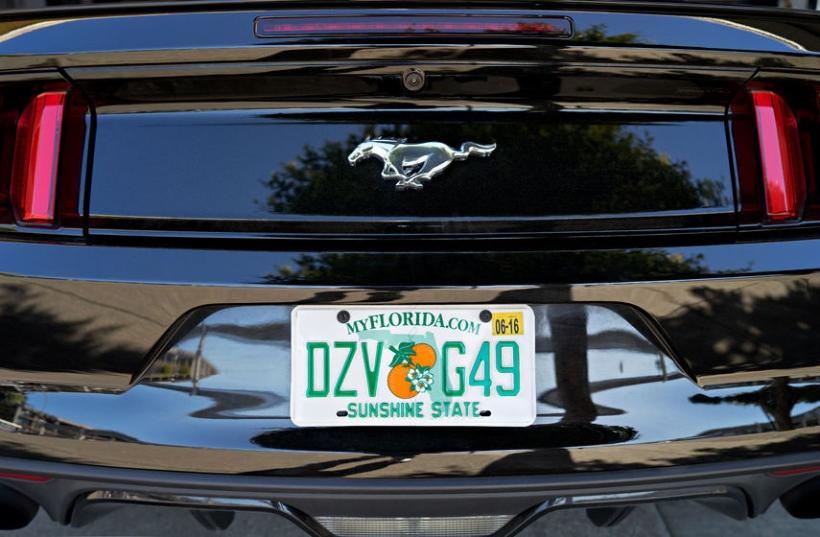
Last Updated: Aug. 10, 2022
If you’re a snowbird who owns a winter home in the U.S., sooner or later you’ll ask yourself whether it would make sense to keep a car there permanently. It might be that you’re tired of the expense and time spent driving back and forth – or it might be that you want an extra vehicle for all your visiting family and friends.
Whatever the reason, you may decide to leave one of your cars at your U.S. home year-round, in which case you will have to take the following steps in order to be compliant with U.S. law.
Temporarily importing your vehicle to the U.S.
Canadians can temporarily import their Canadian licensed cars to the U.S. for personal use for up to one year at a time without going through the process of importing it permanently. To fall under this category, your vehicle must be exported within one year and may not be sold in the U.S.
However, if you keep your car in the U.S. for more than a year, it can be seized for non-payment of duty, so if you do decide to keep your car there permanently, it’s important to complete the permanent import process before the 365 days are up.
Getting started
Before you decide to permanently import your car to the U.S. from Canada, we suggest you read this overview on importing a vehicle to the U.S. from U.S. Customs and Border Protection (CBP). Depending on your situation, importing your car can be a confusing, time consuming and sometimes impossible process, so it’s not for everyone.
Please note that while this article provides helpful information on the steps needed to import your car to the U.S. from Canada, regulations can change without notice and you should always consult the relevant agencies for complete guidelines and up to date information. In addition, keep in mind that some procedures may differ depending on which State you reside in, so you may want to check State requirements as well.
We strongly advise you to read all of the official government links provided in this article to ensure your vehicle is eligible to be imported to the U.S. and you are following all required rules and regulations.
Using a broker
Due to the complex and ever-changing rules and requirements to permanently import a vehicle to the U.S., you may want to consider engaging the services of an experienced vehicle import broker to assist you with the process.
While there is a cost to using a broker, in the long run it can save you a lot of time, frustration and potential hassles.
Keep in mind that if you use a broker, you’ll still have to register the vehicle yourself in your state according to local requirements.
At the border
If you intend to keep your car in the U.S. beyond a year and convert it to a U.S. registration, be sure to declare this to the customs officer at the border when you cross into the United States.
You’ll need to provide the officer with your vehicle registration as well as completed DOT Form H7 and EPA Form 3520-1 and any supplemental documentation to prove that your car meets safety and emissions standards (see Step 1 below).
If everything is in order, you will receive written approval that you have met all the requirements from the customs officer, which you must then take with you to your final destination where you will register your car and convert it to a U.S. registration and ownership.
Make sure to ask the customs officer to stamp your passport at the border so you can prove when you entered the U.S., as this may be helpful later on in the process when you register your vehicle.
We have received unverified reports from some Snowbird Advisor members that they were unable to import their vehicles and turned away at the border because they did not own property in the U.S. However, we have inquired about this requirement with the CBP and they informed us this is not a federal requirement for importing a vehicle (although the state of Florida does require you to have a local address to register a vehicle). As with all situations at the border, it often comes down to the individual officer you are dealing with and their interpretation of the rules.
Duties
Automobiles are generally subject to duty of 2.5% of their current value when they are imported to the United States. However, vehicles manufactured in USMCA countries (U.S., Mexico and Canada) may be exempt from this duty.
STEP 1: Safety and Emissions Compliance
All vehicles imported into the U.S. must be compliant with U.S. Federal motor vehicle safety standards (FMVSS) set by the U.S. Department of Transportation (DOT) and U.S. emission standards set by the Environmental Protection Agency (EPA)
When bringing your vehicle from Canada into the United States, you will be required to present the following completed compliance forms:
DOT Safety Compliance Requirements
All vehicles less than 25 years old must meet all U.S. FMVSS standards to be imported into the United States. You can determine if your vehicle is compliant by looking for a FMVSS certificate label (usually inside the car door or under the hood). If your vehicle has this label, you should have no problem importing it to the U.S. from a safety standards standpoint.
However, in many cases you will find that your vehicle only has a label certifying it complies with all Canadian motor vehicle safety standards (CMVSS). If you have foreign car, it may not have a safety certificate label for Canada or the U.S.
If your vehicle is only certified to meet CMVSS standards, you can still import your vehicle to the United States as long as you get a letter from the vehicle’s original manufacturer (not dealer) on the manufacturer’s letterhead stating that your vehicle conforms to all applicable FMVSS standards - you can find a list of manufacturer contacts here. It’s important to note that some car manufacturers are refusing to issue such a letter, so make sure you check with them before doing anything else.
If your car isn’t certified to meet FMVSS or CMVSS standards, you will want to look at the regulations to explore your other options.
However, you’ll probably find that it just isn’t worth the time, expense and hassle in this case, as you’ll generally be required to engage a Registered Importer to import your car into the United States and make the necessary modifications (you can find a list of Registered Importers here) and post a bond for 1.5 X the current dutiable value of your car until it is modified and certified.
For complete DOT safety standard guidelines and procedures related to importing a vehicle from Canada to the United States, visit the National Highway Traffic Safety Administration (NHTSA) website.
EPA Emission Standards Compliance Requirements
All vehicles that are imported to the U.S. must conform to the EPA’s emission standards requirements.
If your vehicle has a label stating that it is certified to United States EPA federal emission standards, then you shouldn’t have an issue importing your vehicle. To see if your vehicle has been certified, look under the hood of your car or in the engine compartment for a label that reads “Vehicle Emission Control Information” and includes the certification.
More often than not, your Canadian vehicle won’t have a label indicating it is EPA certified. However, in many cases your car will have an emission control system that is identical to an emission control system that has been certified in the United States.
In both situations you can still import your vehicle to the U.S., but you will need to obtain a letter of compliance from the vehicle manufacturer’s U.S. representative stating that the vehicle complies with all U.S. EPA regulations. You can find a list of U.S. Auto Manufacturer’s Representatives here. Note that some manufacturers may refuse to issue a letter.
If your vehicle does not have an EPA certification label and does not have an emission control system that is identical to one certified by the EPA, you will want to look at the regulations to explore your other options, as you may be eligible to apply for a written letter of exemption from the EPA which must be obtained prior to importing your vehicle.
Outside of an exemption, you’ll likely have to use an Independent Commercial Importer to bring your vehicle south of the border and modify it, as well as post a bond. Once again, if you find yourself in this situation, you’ll probably find that it just isn’t worth all the added time, expense and hassle to export your car from Canada to the U.S.
Complete emission standard requirements and guidelines for importing a car to the U.S. can be found on the Environmental Protection Agency (EPA) website.
STEP 2: Investigate whether you need a U.S. driver’s license
The rules keep changing regarding Canadians who have residences in the U.S. as to whether they need – or indeed are even entitled to obtain – a U.S. driver’s license or I.D. card. You should check with your State of residence what the rules are - and whether you can just use your Canadian driving license on an ongoing basis.
If you do need to apply for a license and/or I.D. card, you will have to provide your Canadian driver’s license, your passport for a second photo I.D. and a property tax bill or other utility bill with your name and U.S. address on it. There will be a fee and you will have to renew it each year. Also, they may take a photo of you and an eye scan. It is possible that they may require proof of the day you entered the U.S. to ensure you have not gone over the allowable time (180 days). If your passport was stamped when you entered, it is helpful.
STEP 3: Get Insurance
You must arrange for U.S. auto insurance before your car is transferred to a U.S. registration, as you cannot keep your Canadian insurance once you do this.
Accordingly, you will need to find a U.S. auto insurance broker or company. They may require your Canadian ownership details and a copy of your driver record in Canada. Shop around as the market is quite competitive for U.S. auto insurance. Be sure to mention if the car will not be driven for 6 months of the year, as this may affect your coverage and/or entitle you to lower premiums.
STEP 4: Register Your Vehicle
In addition to importing your vehicle at the federal level, you’ll also need to register it in the state where you spend your winters with the local Department of Motor Vehicles (DMV).
Before you begin the process of importing your vehicle, you may want to contact your state DMV to find out what the current rules and fees are for a non-U.S. citizen/resident to register a vehicle.
To register your vehicle, check locally to see where your nearest vehicle registration office is and make an appointment. They will verify your serial number and your odometer reading. You must also bring all of your vehicle import paperwork that was approved at the border with you, as state DMVs won’t register an imported vehicle without it.
Make sure that you are at a DMV location that is authorized to verify vehicles for aliens (that’s you!). You will have to pay a one-time fee the first time you are issued your new plates.
You can find links to DMVs in popular snowbird states below:
The Alternative to Importing a Vehicle
If all of the above sounds like a lot of running around (and it is!) then you might want to consider purchasing a new or used vehicle in the U.S. instead to avoid some of the many steps and potential issues outlined above.
















